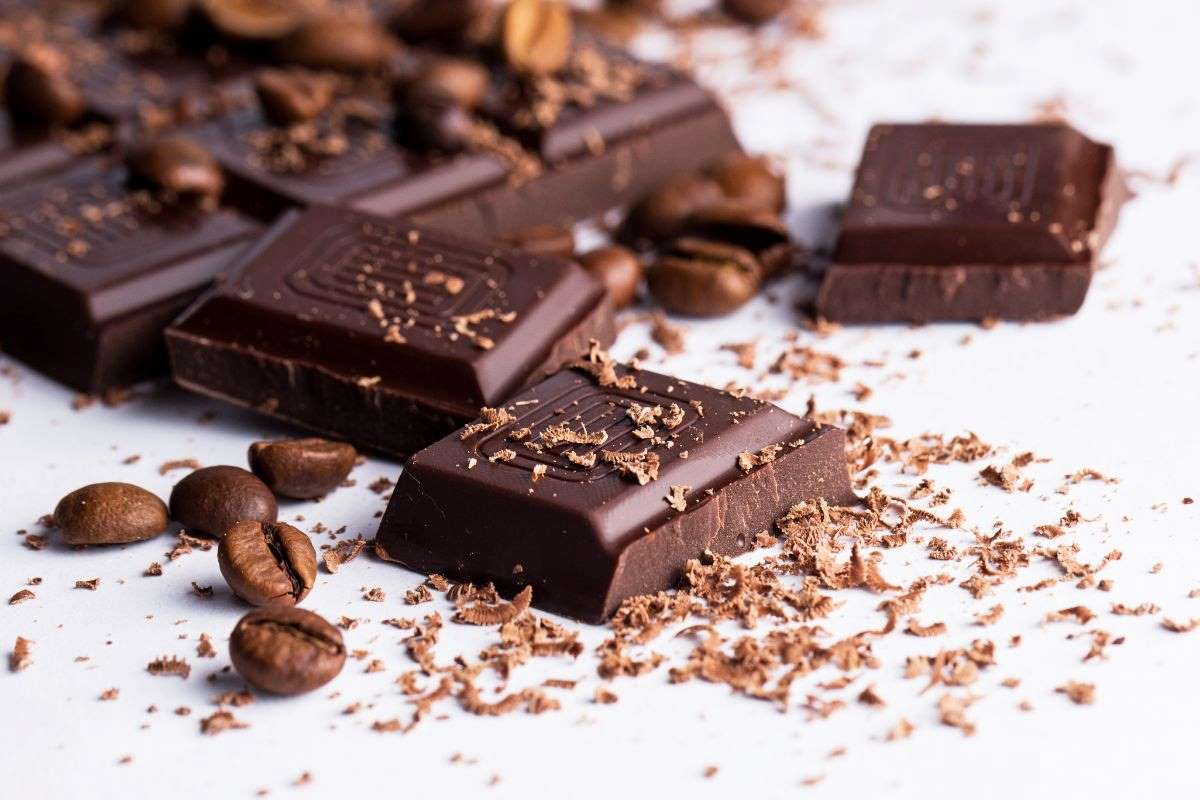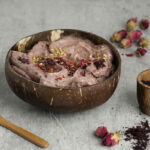Chocolate is a beloved treat worldwide, enjoyed by people of all ages. Among its various forms, milk chocolate stands out for its creamy texture and sweet flavor. However, many chocolate lovers often wonder about its caffeine content. Does milk chocolate have caffeine? This article delves into the details, examining milk chocolate’s caffeine content and its potential health effects.
Table of Contents
- What is Caffeine?
- Sources of Caffeine
- How Caffeine Works
- The Cacao Plant and Caffeine
- Caffeine in Milk Chocolate
- Health Effects of Caffeine in Milk Chocolate
- Health Benefits of Milk Chocolate
- Caffeine Sensitivity and Milk Chocolate
- Practical Tips for Managing Caffeine Intake
- Conclusion
What is Caffeine?
Caffeine is a natural stimulant in tea, coffee, and cacao plants. It acts on the brain and central nervous system to enhance alertness and reduce fatigue.
Caffeine’s effects can be traced back to ancient times, with the first recorded use of brewed tea around 2737 B.C. Coffee’s discovery is attributed to an Ethiopian shepherd who noticed increased energy in his goats after they ate coffee berries.
In the late 1800s, caffeinated soft drinks emerged, followed by energy drinks. Today, caffeine is a staple in the diets of about 80% of the global population, with consumption rising to 90% among North American adults.
Sources of Caffeine
Caffeine is present in various food and drink items, each contributing to your overall daily intake. Understanding these sources can help you manage your caffeine consumption effectively. Here’s a comprehensive look at the most common sources of caffeine:
Coffee
Coffee is one of the most well-known and widely consumed sources of caffeine. It is made from roasted coffee beans and is available in various forms, including espresso, brewed, and instant coffee.
- Brewed Coffee: Usually includes about 95 milligrams of caffeine per 8-ounce cup.
- Espresso: Contains approximately 63 milligrams per 1-ounce shot.
- Instant Coffee: Usually has about 30-90 milligrams per 8-ounce cup, depending on the brand and strength.
Tea
Tea, made from the leaves of the Camellia sinensis plant, comes in several varieties, including black, green, white, and oolong. The caffeine content varies based on on the type and preparation method.
- Black Tea: Contains around 47 milligrams per 8-ounce cup.
- Green Tea: Has regarding 28 milligrams per 8-ounce cup.
- White Tea: Generally contains 15-30 milligrams per 8-ounce cup.
- Oolong Tea: Contains approximately 30-50 milligrams per 8-ounce cup.
Soft Drinks
Carbonated soft drinks often contain added caffeine, especially colas and some lemon-lime sodas. The caffeine content varies by brand and type.
- Cola: A 12-ounce can typically contain about 34 milligrams of caffeine.
- Diet Cola: Contains a similar amount of caffeine as regular cola.
- Other Soft Drinks: Some brands offer caffeinated lemon-lime sodas or root beers, but these generally contain lower levels of caffeine.
Energy Drinks
Energy drinks are created to provide a quick energy boost and often contain high levels of caffeine, other stimulants, and vitamins.
- Standard Energy Drinks: Usually have about 80 milligrams of caffeine per 8-ounce serving, though some can contain significantly more, up to 200 milligrams or more per can.
Chocolate
Chocolate contains caffeine because it is made from cacao beans, which naturally have caffeine. The amount of caffeine varies based on the type of chocolate and its cacao content.
- Dark Chocolate: Contains around 20 milligrams per ounce.
- Milk Chocolate: Typically has about 6 milligrams per ounce.
- White Chocolate: Contains negligible caffeine, as it does not include cocoa solids.
Caffeinated Snacks
Some snack foods and confectioneries are specially formulated with added caffeine to boost energy.
- Caffeinated Gum: Can contain about 40 milligrams per piece.
- Caffeinated Candy: Varies widely but can contain up to 100 milligrams per serving.
Medications
Certain over-the-counter and prescription medications contain caffeine, often to enhance pain relief effectiveness or combat drowsiness.
- Pain Relievers: Some combination pain relievers contain about 65 milligrams of caffeine per tablet.
- Cold Medications: Can include caffeine to help relieve headaches or enhance decongestant effects.
How Caffeine Works
When eaten, caffeine is rapidly absorbed from the gastrointestinal tract into the bloodstream. From the blood, it is distributed throughout the body, including the brain, liver, and other organs. Caffeine is metabolized in the liver into various compounds, including paraxanthine, theobromine, and theophylline, contributing to its physiological effects.
Caffeine exerts its influence primarily through its action on the brain. It blocks adenosine receptors, particularly the A1 and A2A receptors. Adenosine is a neurotransmitter that encourages relaxation and drowsiness by binding to these receptors. By interfering with adenosine’s binding, caffeine prevents fatigue and enhances wakefulness.
This increases neurotransmitters such as dopamine and norepinephrine, which boost alertness, mood, and cognitive function. The result is a temporary increase in mental and physical energy, helping you stay awake and focused.
The Cacao Plant and Caffeine
To determine whether milk chocolate contains caffeine, it is essential to examine its primary ingredient: cacao. The cacao plant naturally contains caffeine from which cocoa and chocolate are derived. The amount of caffeine in chocolate products depends on the type and quantity of cacao used.
Cacao Content in Chocolate
Cacao content significantly impacts the caffeine levels in chocolate:
- Dark Chocolate: Typically includes a high percentage of cacao, ranging from 50% to 90%. This high cacao content translates to increased caffeine levels. For example, an ounce of dark chocolate can have around 20 milligrams of caffeine, reflecting its rich cacao composition.
- Milk Chocolate: Contains a lower percentage of cacao, usually around 20% to 40%. Adding milk solids and sugar dilutes the cacao content, reducing caffeine. A standard serving of milk chocolate generally has about 6 milligrams of caffeine, making it a milder source than dark chocolate.
- White Chocolate: Made from cocoa butter and does not contain cocoa solids, the primary caffeine source. Consequently, white chocolate has negligible amounts of caffeine, offering a chocolate flavor without the stimulating effects.
The Cacao Bean
The cacao bean is fundamental to both chocolate and cocoa powder production and contains several key components:
- Cocoa Solids: These are the ground, non-fat parts of the cacao bean and contain the majority of the caffeine and theobromine, contributing to the chocolate’s stimulating effects.
- Cocoa Butter: The fat retrieved from the cacao bean, cocoa butter has minimal caffeine content. It primarily provides a smooth texture and rich mouthfeel in chocolate products.
- Non-Fat Cocoa Solids: These cacao bean parts are left after the cocoa butter is removed. They are the primary source of caffeine in chocolate and contribute to its overall caffeine content.
Caffeine in Milk Chocolate
Milk chocolate is known for its mild and sweet flavor. This is mainly due to adding milk solids and sugar, which dilutes the cacao content. This dilution results in lower caffeine levels compared to dark chocolate.
Typical Caffeine Content
On average, a 1-ounce (28-gram) serving of milk chocolate contains about 6 milligrams of caffeine. For comparison:
- A 1-ounce serving of dark chocolate includes approximately 20 milligrams of caffeine.
- An 8-ounce cup of coffee includes about 95 milligrams of caffeine.
Factors Influencing Caffeine Levels
Several factors can influence the caffeine content in milk chocolate:
- Brand and Recipe: Different brands use varying amounts of cacao and milk solids, affecting caffeine content.
- Serving Size: Larger servings will naturally contain more caffeine.
- Added Ingredients: Some milk chocolates may include additional cocoa solids, increasing caffeine levels.
Comparison with Other Chocolate Products
- Dark Chocolate: As noted, dark chocolate has significantly more caffeine due to its higher cocoa content. A standard 1-ounce serving can contain up to 20 milligrams of caffeine or more, depending on the percentage of cacao.
- White Chocolate: Made from cocoa butter with no cocoa solids, white chocolate has negligible caffeine content. It’s a suitable choice for those who are highly sensitive to caffeine.
- Hot Chocolate: The caffeine content of a cup of hot chocolate can vary based on the recipe and brand, typically ranging from 5 to 10 milligrams per serving.
Health Effects of Caffeine in Milk Chocolate
Due to its caffeine content, milk chocolate can have various health effects, albeit lower than that of other sources like coffee or energy drinks. The impact of caffeine in milk chocolate largely depends on individual sensitivity, quantity consumed, and overall caffeine intake from other sources.
Positive Effects
- Enhanced Alertness: Even small amounts of caffeine can help improve focus and alertness. The caffeine in milk chocolate may provide a mild boost in mental clarity and concentration, making it a pleasant way to stave off drowsiness.
- Mood Improvement: Caffeine can stimulate the release of neurotransmitters like dopamine and serotonin, which may enhance mood and provide a feeling of well-being. This effect is often subtle but can contribute to the overall enjoyment of eating chocolate.
- Physical Performance: Although milk chocolate contains less caffeine than dark chocolate, its small amount might offer a slight enhancement in physical endurance. This can be beneficial for short-term energy boosts during physical activities.
Potential Negative Effects
- Insomnia and Sleep Disturbance: Consuming milk chocolate close to bedtime may disrupt sleep due to its caffeine content. While the amount is relatively low, caffeine can still affect sensitive individuals by causing difficulties in falling or staying asleep.
- Digestive Issues: Excessive consumption of milk chocolate, particularly in large quantities, can lead to digestive discomfort. This may include symptoms like acid reflux or stomach upset, partly due to the combined effects of caffeine and sugar.
- Anxiety and Jitters: In some people, even small amounts of caffeine can cause anxiety or jitteriness. This is more likely if they have a lower tolerance to caffeine or if milk chocolate is consumed in large quantities.
Health Benefits of Milk Chocolate
Despite its caffeine content, milk chocolate offers several notable health benefits:
- Antioxidants: Milk chocolate contains flavonoids, an antioxidant that helps protect the body from oxidative stress & free radicals. These antioxidants can reduce inflammation and may help lower the risk of chronic diseases like heart disease.
- Minerals: It provides essential minerals, including calcium, magnesium, and iron. Calcium supports bone health, magnesium aids in muscle and nerve function & iron is crucial for oxygen transport in the blood. These minerals contribute to overall health & well-being.
- Mood Booster: Consuming milk chocolate can stimulate the release of endorphins, the body’s natural “feel-good” hormones. This effect can improve mood and provide a sense of pleasure and relaxation, making milk chocolate a delightful treat that also positively impacts emotional health.
Caffeine Sensitivity and Milk Chocolate
Individuals vary in their sensitivity to caffeine. Some people may experience adverse effects even from the small amounts found in milk chocolate, while others can consume larger quantities without issue.
Children and Caffeine
Children are more sensitive to caffeine than adults. Given their lower body weight, even small amounts of caffeine can lead to hyperactivity, anxiety, and sleep disturbances. Therefore, monitoring and limiting their intake of milk, chocolate, and other caffeinated products is advisable.
Pregnant Women and Caffeine
Pregnant women are often advised to limit their caffeine intake to minimize potential risks to the developing fetus. While the caffeine content in milk chocolate is relatively low, it still contributes to the total daily caffeine intake and should be consumed in moderation.
Caffeine Sensitivity in Adults
Some adults may have heightened sensitivity to caffeine due to genetic factors, leading to increased jitteriness, anxiety, or insomnia, even with small amounts. Such individuals should be mindful of their milk chocolate consumption.
Practical Tips for Managing Caffeine Intake
To manage your caffeine intake, especially from milk chocolate, consider the following practical tips:
Read Labels
Always check the packaging of milk chocolate products for information on cacao content and serving size. Some brands may also list the caffeine content directly, which can help you gauge how much caffeine you’re consuming. Understanding these details can help you manage your overall caffeine intake more effectively.
Moderation is Key
Enjoy milk chocolate in moderation to avoid excessive caffeine consumption. Consider portion sizes and balance your milk chocolate intake with other caffeine sources throughout the day. Limiting yourself to small amounts and being mindful of your total daily caffeine intake can prevent overstimulation and other potential adverse effects.
Know Your Sensitivity
Be aware of your sensitivity to caffeine. Some individuals may experience jitteriness, anxiety, or difficulty sleeping, even with small amounts of caffeine. If you notice any adverse consequences, limiting your milk, chocolate, and other caffeinated products is essential to suit your tolerance.
Alternatives to Milk Chocolate
If you are particularly sensitive to caffeine or need to reduce your intake, consider these alternatives:
- White Chocolate contains negligible amounts of caffeine, making it suitable for those looking to avoid caffeine altogether.
- Carob: A chocolate substitute made from the carob bean, which contains no caffeine and offers a sweet, chocolate-like flavor.
- Caffeine-Free Sweets: Choose candies and treats that do not contain cocoa or coffee. These options allow you to delight in a sweet treat without the stimulating effects of caffeine.
By following these tips, you can enjoy milk chocolate while effectively managing your caffeine intake. Being mindful of the sources of caffeine in your diet and selecting appropriate alternatives will help maintain a balanced and health-conscious approach to enjoying sweet treats.
Conclusion
Milk chocolate does contain caffeine, but in relatively small amounts compared to other sources like coffee, tea, and dark chocolate. While it can contribute to caffeine intake, moderate consumption is generally safe for most people. Understanding the caffeine content in milk chocolate can help you make informed choices, especially if you are sensitive to caffeine or need to control your intake for health reasons. Enjoy your milk chocolate treats, but always remember to consume them mindfully.

















